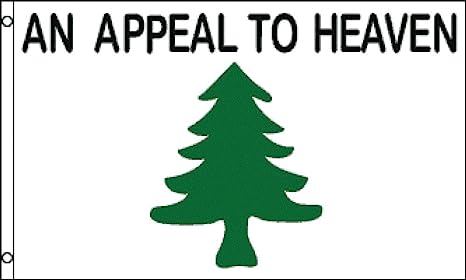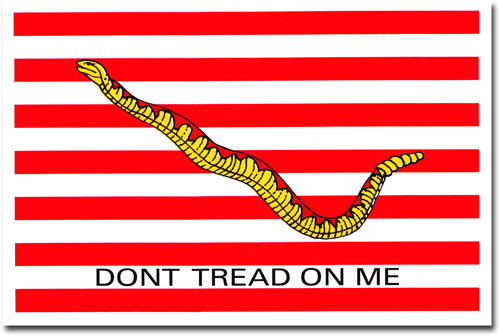“The God who gave us life, gave us liberty at the same time.”
– Thomas Jefferson
Symbols representing the ideals of America have been well-established since 1775. The Declaration of Independence, the Constitution and Bill of Rights, the Stars and Stripes, the Star Spangled Banner, the Pledge of Allegiance, and many others all remind us of what it means to be part of this great nation.
In honor of July 4th, I think it fitting that we consider some of the lesser-known symbols of that long-ago time when our nation was being formed and our history was just beginning.
Flags and banners have been used for thousands of years as a means of national, state, and military identification. They have also been used as a means of warning to adversaries. In the early days of our nation, the flags below were flown as representations of patriotic thought and served as warnings to the British.

The Gadsden Flag was designed by Christopher Gadsden, a South Carolina delegate to the Continental Congress who served as a brigadier general in the Continental Army.
During the American Revolution, the flag became a popular symbol of patriot pride and a mark of unity for the thirteen colonies, while serving as a warning to the British that colonial liberty must not be violated.

Colonel William Moultrie of the Continental Army designed this flag, which was flown for the first time during the defense of Sullivan’s Island near Charleston, South Carolina in June, 1776. The fort on Sullivan’s Island successfully withstood a bombardment by British warships, preventing the loss of the key port of Charleston.
During the battle, the flag was shot away, but Sergeant William Jasper heroically risked his life to retrieve the flag and hoist it again. This event caused the flag to become an important and popular symbol of liberty in the south, especially the South Carolina militia.

Designed by Colonel Joseph Reed, secretary to General Washington, the Washington’s Cruisers Flag was used by six navy frigates commissioned by Washington to fight against British warships during the Revolution.
The motto ‘An Appeal to Heaven’ was originated by philosopher John Locke as a statement of the right of revolution, as written in his essay, Second Treatise of Civil Government in 1690. The pine tree had long been a symbol in New England, representing peace, but also resistance.

No one knows what the first Naval Jack looked like, other than it had thirteen horizontal red and white stripes. Commodore Esek Hopkins issued an instruction that his vessels were to fly this flag, but the snake image and ‘Dont Tread on Me’ were first added in 1880.
Today, the US Navy continues the use of the flag depicted above, but it’s an honor bestowed only on the Navy’s oldest active warship – currently the USS Blue Ridge, an amphibious command ship.
These four historic flags and others are important historical symbols of America and each serves as an important part of our nation’s history. Each one is available for purchase and can be appropriately flown or displayed in the home.
© Jeffery J. Michaels / Plain English Publications 2023
(Quotations allowed with attribution to this blog)
